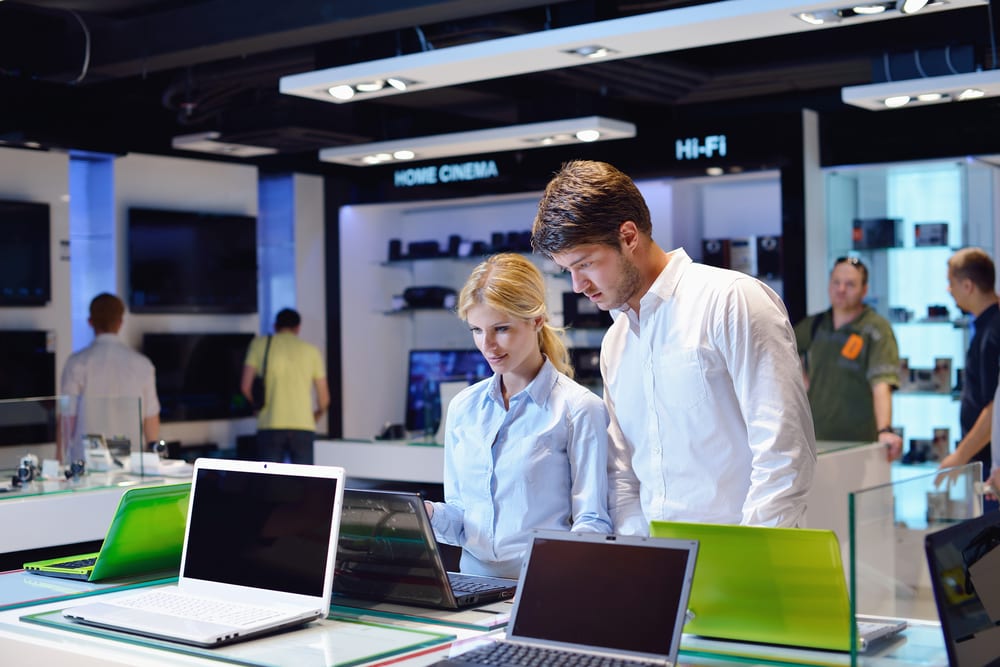The ever growing array of
#1. Power
A lot of the basic functions you use your computer for require relatively little computing power. Word processing, spreadsheets and emailing use little more processing power than you would find in a DVD player. What does require a lot of power are the operating systems that make those functions smooth, seamless and user friendly.
The power of the CPU in your laptop might make the difference in a task taking 7 minutes or 10. Lots of small time savings like this add up over the life of a laptop so consider carefully how fast a laptop you really want.
Dual Core should suffice for most office applications but Quad Core may be desirable for more strenuous business tasks.
Ultrabooks typically have a high power, low wattage CPU that can really make a difference to battery life. This efficiency costs a little more but if you need a lot of power on the move then this is a good choice.
In terms of RAM you will want to look for 4GB and higher especially where the laptop uses integrated graphics as these typically share system memory.
#2. Storage
You can never get enough storage. But it shouldn’t come at any price. Hard drives have been increasing in capacity and decreasing in price for many years now. Make sure you aren’t paying over the odds for just a little extra capacity.
Compare different versions of the same model with different storage options to get an idea of how much extra you are paying. It is always more sensible to put that extra money towards an external back up hard drive. While a high quality laptop may run for years that won’t stop you leaving it in the back of a taxi or spilling coffee over it. Always back up your data.
500GB should be enough for most users, though you may want to move towards 1TB if you expect to store a lot of media files such as PowerPoint slides, videos and hi res images.
SSD drives are far more expensive at these capacities but if you hate waiting for applications to load or operating systems to boot they are a super speedy option. A good compromise is to use a smaller capacity SSD for your operating system and core applications with a larger HDD for storing files and documents.
#3. Form
Portable computers come in an ever more varied number of form factors. These significantly affect the utility of a device in different applications. How you intend to use a device should determine what form factor you select.
Tablets are ideal for high mobility within an office and are great for sharing data and information with clients and colleagues alike.
Hybrid Laptops give all of the presentation capabilities of a tablet but with the facility to use a keyboard when needed. They are a great option for sales staff on the road who need to be able to quickly write up presentations and proposals and still give dynamic demonstrations.
Ultraportable laptops make the most efficiencies in size without significant reductions in power. When you have to be on the move all day those few grams and centimetres can make an enormous difference.
#4. Peripherals
Connectivity has made many of the standard peripherals of the laptop somewhat redundant. One of the benefits of this is that the savings made by leaving peripherals out can be transferred to core areas such as processing power and storage.
However, this puts a lot of emphasis on connectivity. In this case the faster 5GHz Wi-Fi bandwidth becomes a must. 5GHz connections are still not widely available in public but when they are they make a huge difference especially when using cloud services.
You also want to give yourself the ability to use peripherals when you need them. A decent selection of USB ports is the best way to facilitate this. USB 3.0 allows for much faster transfer of files to a backup hard drive. HDMI output is also very useful for giving presentations on high definition screens.
#5. Display
The display is often an afterthought. It shouldn’t be, particularly with a laptop. Unlike a desktop where you can easily replace a monitor at relatively little expense this is not an option with a laptop.
Many screens have relatively small viewing angles or appear washed out making it difficult to see. Eye strain or headache are not worth the time it takes to check the quality of a laptop’s display before you buy. Look for backlit LED screens and wide viewing angles if you want to save yourself and your staff from cricked necks and bulging eyes.
Have you any other suggestions when thinking of buying a laptop for your business? Please share them in the comments below.
Images: ”people in consumer electronics retail store looking at latest laptop, television and photo camera to buy/ Shutterstock.com“
__________________________________________________________________________________
 Connect with Tweak Your Biz:
Connect with Tweak Your Biz:
Would you like to write for Tweak Your Biz?
Tweak Your Biz is a thought leader global publication and online business community. Today, it is part of the Small Biz Trends stable of websites and receives over 300,000 unique views per month [See our review of 2014 for more detailed information].
An outstanding title can increase tweets, Facebook Likes, and visitor traffic by 50% or more. Generate great titles for your articles and blog posts with the Tweak Your Biz Title Generator.


 Connect with Tweak Your Biz:
Connect with Tweak Your Biz:


